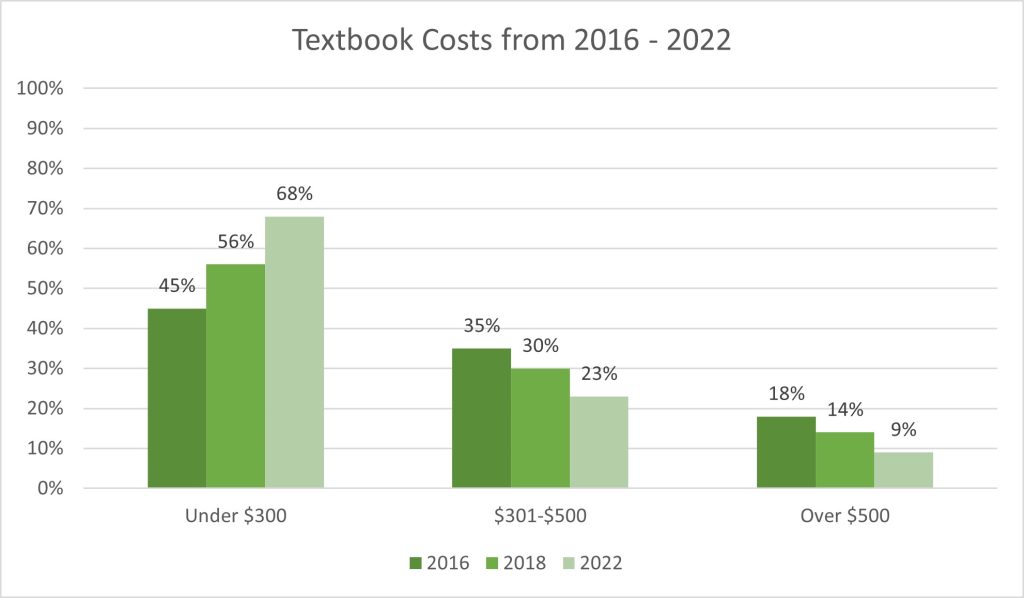Guest Post by Alex Neff, Director of Data Analytics and Textbook Affordability (DATA) at USF Libraries
The Textbook Affordability Project (TAP) at the University of South Florida (USF) has been a vital advocate for addressing the challenges of rising textbook costs since 2010. TAP’s multifaceted approach, including e-textbook pilots, surveys, faculty and student engagement, compliance initiatives, and outreach events, significantly impacted textbook affordability awareness and cost reduction strategies at USF.
In 2017, TAP became the official USF source for student and faculty support on textbook affordability issues and compliance, and it evolved into a distinct unit within the USF Libraries. TAP’s commitment extended to developing new cost-saving initiatives, implementing enhanced library services, conducting social media campaigns, and fostering deeper collaborations between the USF faculty and bookstore to find affordable solutions.
To gain a comprehensive understanding of the textbook affordability landscape at USF and across Florida, the Florida Virtual Campus (FLVC) Student Textbook and Instructional Materials Surveys from 2016, 2018, and 2022 are great resources for insights and identifying trends on these complicated issues.
When comparing the FLVC surveys, a positive, cost-reducing trend emerged across different cost brackets showing an overall increase in “under $300” textbooks and a consistent decrease in the more expensive textbooks options as well.

Focusing on the 2022 FLVC survey, there are insights on which specific strategies students used to navigate high textbook costs:
- 51% of students opted to buy textbooks from sources other than the campus bookstore.
- 50% chose to rent digital textbooks, reflecting the growing popularity of digital resources.
- 40% preferred buying used copies from the campus bookstore, emphasizing the continued importance of physical textbooks.
- 29% found cost relief in renting printed textbooks, a practice that combines affordability with the tangible qualities of printed materials.
In addition, financially burdensome textbook costs can negatively impact student success and academic outcomes, and the repercussions of high textbook costs could resonate through various academic decisions:
- 53% of students admitted to not purchasing required textbooks, potentially compromising their academic performance.
- 44% took fewer courses, illustrating the direct impact of textbook costs on academic enrollment.
- 38% did not register for specific courses due to the financial strain of required materials.
- 24% were forced to drop a course, demonstrating the real consequences of unaffordable textbooks on academic progress.
Want to learn more?
Read the second post in the TAP series: TAP, Part II: Reducing The Financial Burden On Students
In this post, we explore TAP’s successful textbook affordability initiatives at USF, such as the TAP Toolbox, Textbook Recommendation Service, Ebooks for the Classroom+, TAP Course Reserves, and Affordability Counts, contributing to an overall estimated savings of $40 million for students since 2010.